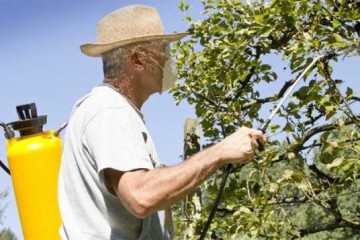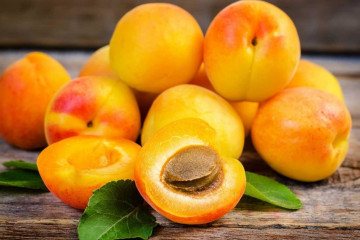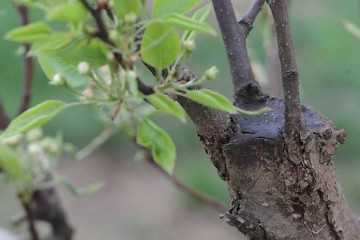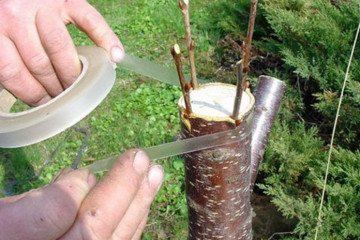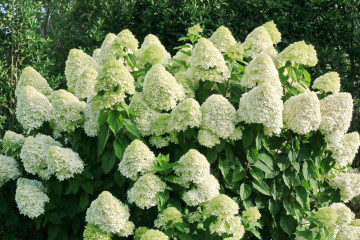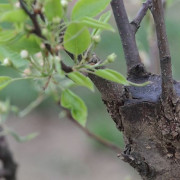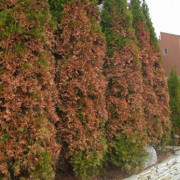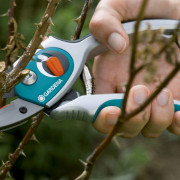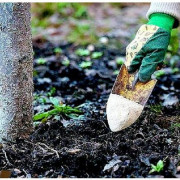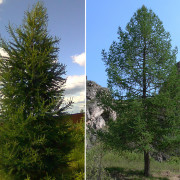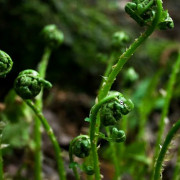How to close up a hollow in an apple tree on a trunk with cement or clay
Content:
- Reasons for the appearance
- At what time to close up a hollow
- Can you leave the hollow untreated?
- Disinfection, healing and stopping the destruction of wood
- Elimination of a hollow from a seedling
- When treating an old apple tree
- The choice of material for filling
- Experienced gardeners recommendations
- Preventive measures
The formation of a hollow on the trunk indicates progressive wound rot. How to close up a hollow in an apple tree with improvised means is described in this article.
Reasons for the appearance
The cavity fungus, which affects the cambium, contributes to the formation of a hole in the wood. The infection is called "wound rot". The spores of the fungus penetrate into the microcracks on the wood; it gradually grows, penetrating deep into the wood.
Diseases are more susceptible to old trees with weakened immunity. Infection of young seedlings occurs after injury to the bark.
At what time to close up a hollow
Usually they do work in the summer, when it's warm. At positive air temperatures, filling solutions harden faster.
In the spring, it is undesirable to clean wood due to active sap flow. An exception is severe damage to the bark, which threatens the life of the tree.
In warm autumn, the processing of hollows can be carried out, but it is better to have time to finish the work before the onset of frost.
Can you leave the hollow untreated?
Without treatment, the hole in the trunk will grow, penetrating deeper into the trunk, and destroying the tree. Gradually, the movement of nutrients from the root to the branches will be disrupted, the shoots will dry out. Fruiting will drop sharply.
A diseased apple tree will become a source of infection for neighboring seedlings. In a few years the tree will die.
Disinfection, healing and stopping the destruction of wood
Before sealing the hollow, it is necessary to thoroughly clean the affected tissue to healthy areas and disinfect the wound. If this is not done, the infection will continue its destructive work even under the filling.
All dust is removed from the hollow with your hands. Dead wood is scraped with scrapers and stiff brushes until a light and clean material appears.
You can treat the affected area with one of these tools:
- an aqueous solution of ferrous sulfate in 5% concentration;
- hot raspberry solution of potassium permanganate;
- solution of copper sulfate concentration 3%;
- hydrogen peroxide 3%;
- Bordeaux mixture 3%.
The preparations are applied with a brush, sponge, or abundantly irrigate the wood from a sprayer.
Elimination of a hollow from a seedling
Young trees are easier to heal, since cambium recovery is fast.
How and how to close up a hollow in a young apple tree, step by step instructions:
- The hole in the bark is freed from dead tissue.
- They are treated with copper sulfate, hydrogen peroxide or potassium permanganate solution. Allow the wound to dry.
- Fill the hole with filling material so that no voids remain inside. The more completely the filling fills the hollow, the less chance of further destruction.
If the hole in the tree is small, you can limit yourself to setting a wooden plug and covering the wound with garden varnish. The edges of the plug must not protrude beyond the hole.
When treating an old apple tree
Treating an old tree requires patience and can take up to 2 weeks. The work algorithm is the same as described above. But, due to the large size of the hole, the surface must be processed especially carefully.
To save material for filling the hollow, prepare a filler: stones, broken brick. Pieces of reinforcement or metal mesh will add extra strength to the seal.
The choice of material for filling
In choosing a material, how to cover up the trunk of an apple tree, each gardener is guided by his own capabilities:
- clay is the most accessible and cheapest material, but also the least resistant to precipitation;
- to fill large hollows, cement is used, which, while solidifying, also serves as a prosthesis for a weakened trunk;
- small holes are successfully filled with the installation mortar, but it is destroyed by exposure to sunlight.
Mounting foam
It is convenient to close up small-diameter hollows with ordinary construction foam.
Operating procedure.
- The hollow is cleaned and processed in the usual way.
- The hole is filled with foam, starting from the very depth. They work quickly, applying mass evenly, trying to get to all corners.
- After the foam hardens, its surplus sticks out of the hollow. They are cut flush with the wood.
- To protect the foam from ultraviolet radiation, it is coated with oil paint.
It is best to use foam designed for outdoor use that can withstand low temperatures.
Cementing
Picture 3 It is better to take small stones for filling the hollow
To prepare a cement mortar for sealing a hollow on an apple tree, take 1 part of cement powder and 3 parts of coarse sand. The dry mixture is diluted with water to the state of liquid sour cream.
The cleared hollow is filled with stones, pieces of thick wire or mesh are placed vertically. Such fillers will add additional rigidity and reduce cement slurry consumption.
Clay filling
To prepare a clay solution suitable for treating a hollow in an apple tree, you will need:
- red viscous clay, which is used for laying stoves;
- cow or horse manure dried and ground into dust;
- gypsum or alabaster to increase the hardness of the filling;
- lime.
The components are mixed in a 1: 1: 0.5 ratio and diluted with water until sour cream is thick. Lime is added at the rate of 1 glass per bucket of mixture.
The prepared solution is poured into a previously prepared hole. To prevent it from flowing out of the vertical hole, the trunk is bandaged with burlap folded in several layers. The fabric will keep the clay from flowing out.
When the clay filling is dry, it is advisable to cover it with oil paint on top. Or you can whiten it thickly by adding PVA glue to the lime mortar. This will protect the seal from precipitation.
Sealing with a wooden stopper
If the hole is shallow and rounded, it is not difficult to close the hole with a wooden plug. It is cut from hardwood (oak, beech, hazel, elm).
The cork is tightly driven (you can tap with a mallet) into the cleaned and disinfected hole in the barrel. From above, the wound is abundantly covered with garden var.
Experienced gardeners recommendations
Hollow treatment in fruit trees is often complicated by ant infestation of wood. Insects build anthills in loose diseased wood, further destroying the tree. Insects are scooped out with scrapers and brushes. The hollow is washed with hot water and soap or soda solution, the root zone is irrigated with poisonous drugs.
The hollow is often formed at the very surface of the earth. You can remove the hole with stones and cement mortar. But, treatment makes sense only if the hollow occupies no more than half of the internal volume of the trunk.
Preventive measures
It is possible to exclude the appearance of hollows on fruit trees if you follow the rules for caring for apple trees:
- annually, in spring and autumn, clean the bark of moss, wash the trunk with soapy water;
- whitewash trunks and skeletal branches;
- pruning on time, cutting out diseased shoots;
- during pruning, do not leave hemp, cover the wounds with garden pitch or clay;
- to clean the branches of fruits affected by fungi and rot;
- spray trees with antifungal drugs in the fall.
These measures will keep the garden healthy, which will ultimately result in stable yields.
The appearance of a hollow in an apple tree comes as a surprise to many. Some tree owners do not pay attention to this and then are surprised that the plant is dying. More experienced gardeners immediately try to take steps to eliminate cause and effect.



